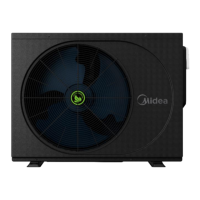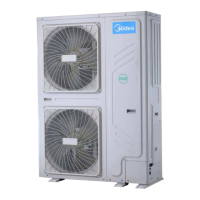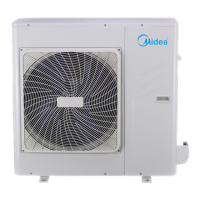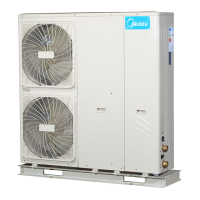Key components:
Compressor:
When the refrigerant gas passes through the compressor, refrigerant pressure increases and temperature rises above that
of the water in the water system.
Electronic expansion valve (EXV):
Controls refrigerant flow and reduces refrigerant pressure.
Four-way valve:
The four-way valve is used to change the direction of refrigerant flow in order to switch between heating and
cooling/defrosting operations. During the cooling/defrosting mode, 4-way valve is powered off, the air side heat exchanger
functions as a condenser and titanium heat exchanger as an evaporator. For heating mode, 4-way valve is powered on, the
air side heat exchanger functions as an evaporator and titanium heat exchanger as a condenser.
High/low pressure switch:
Regulate refrigerant system pressure. When refrigerant system pressure exceeds upper/lower limit, the high/low pressure
switch turns off, stopping the compressor.
Fan assembly:
Forcing air convection to enhance the heat exchange performance.
Water flow switch:
Ensure the water flow is reasonable to enhance system reliability. If the water flow is insufficient, unit stops to protect the
water side titanium heat exchanger from freezing crack in cooling mode and unit stops to avoid excessive high pressure or
discharge temperature of the system in heating mode.
Strainer:
Filter out impurities to avoid electronic expansion valve stuck
Water side titanium heat exchanger:
Used for heat exchange between water and refrigerant
Air side heat exchanger:
Used for heat exchange between air and refrigerant
Service port:
Used for releasing refrigerant, adding refrigerant, connecting pressure meter
Lok ring
Used for sealing the refrigerant system in factory, which can not be used for aftersales service on site.

